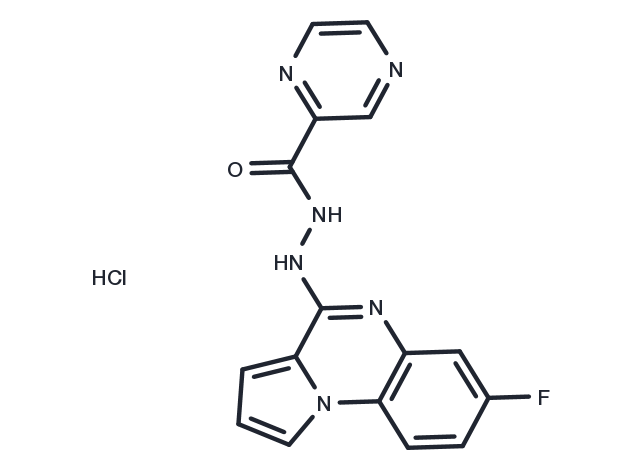Powder: -20°C for 3 years | In solvent: -80°C for 1 year


SC144 hydrochloride, a first-in-class, orally active, small-molecule gp130 (IL6-beta) inhibitor, demonstrates potent inhibition of gp130 ligand-triggered signaling. By binding to gp130, it initiates gp130 phosphorylation (S782) and deglycosylation, impedes Stat3 phosphorylation and nuclear translocation, and suppresses the expression of downstream target genes. Furthermore, SC144 hydrochloride effectively induces apoptosis in human ovarian cancer cells [1].

| Pack Size | Availability | Price/USD | Quantity |
|---|---|---|---|
| 2 mg | 5 days | $ 53.00 |
| Description | SC144 hydrochloride, a first-in-class, orally active, small-molecule gp130 (IL6-beta) inhibitor, demonstrates potent inhibition of gp130 ligand-triggered signaling. By binding to gp130, it initiates gp130 phosphorylation (S782) and deglycosylation, impedes Stat3 phosphorylation and nuclear translocation, and suppresses the expression of downstream target genes. Furthermore, SC144 hydrochloride effectively induces apoptosis in human ovarian cancer cells [1]. |
| In vitro | SC144 effectively inhibits the growth of various human ovarian cancer cell lines, demonstrating promising results with IC50 values within the submicromolar range for OVCAR-8, OVCAR-5, and OVCAR-3 cells (0.72, 0.49, 0.95 μM, respectively) [1]. Its efficacy extends to combating drug-resistant strains of ovarian cancer, including NCI/ADR-RES (Paclitaxel- and Doxorubicin-resistant, IC50=0.43 μM) and HEY (Cisplatin-resistant, IC50=0.88 μM), showcasing its potential to override resistance mechanisms [1]. Furthermore, SC144 at a concentration of 2 μM for 24 hours induces significantly higher apoptosis in OVCAR-8 and Caov-3 cancer cell lines compared to normal kidney epithelial and endometrial cells, emphasizing its selective cytotoxicity towards ovarian cancer cells [1]. The compound also promotes the phosphorylation of gp130 (S782), a key process in cell signaling, in a time- and dose-dependent manner when applied in concentrations ranging from 0.5 to 2 μM over a period of 0 to 6 hours [1]. The cytotoxic action of SC144 is attributed to the impairment of gp130 function, which in turn deactivates Akt and Stat3 signaling pathways and inhibits Stat3-mediated gene expression, leading to cell cycle arrest, anti-angiogenesis, and apoptosis [1]. |
| In vivo | SC144, administered intraperitoneally (i.p.) at a dosage of 10 mg/kg daily for 58 days, significantly delays tumor growth in athymic mice with human ovarian cancer xenografts, inhibiting growth by approximately 73% [1]. When given orally (p.o.) at a dosage of 100 mg/kg daily for 35 days, SC144 treatment results in an average tumor volume that is 82% smaller compared to that of the control group. |
| Molecular Weight | 358.76 |
| Formula | C16H12ClFN6O |
| CAS No. | 917497-70-2 |
Powder: -20°C for 3 years | In solvent: -80°C for 1 year
You can also refer to dose conversion for different animals. More
bottom
Please see Inhibitor Handling Instructions for more frequently ask questions. Topics include: how to prepare stock solutions, how to store products, and cautions on cell-based assays & animal experiments, etc.
SC144 hydrochloride 917497-70-2 SC144 Hydrochloride SC-144 Hydrochloride SC-144 hydrochloride SC 144 Hydrochloride inhibitor inhibit
